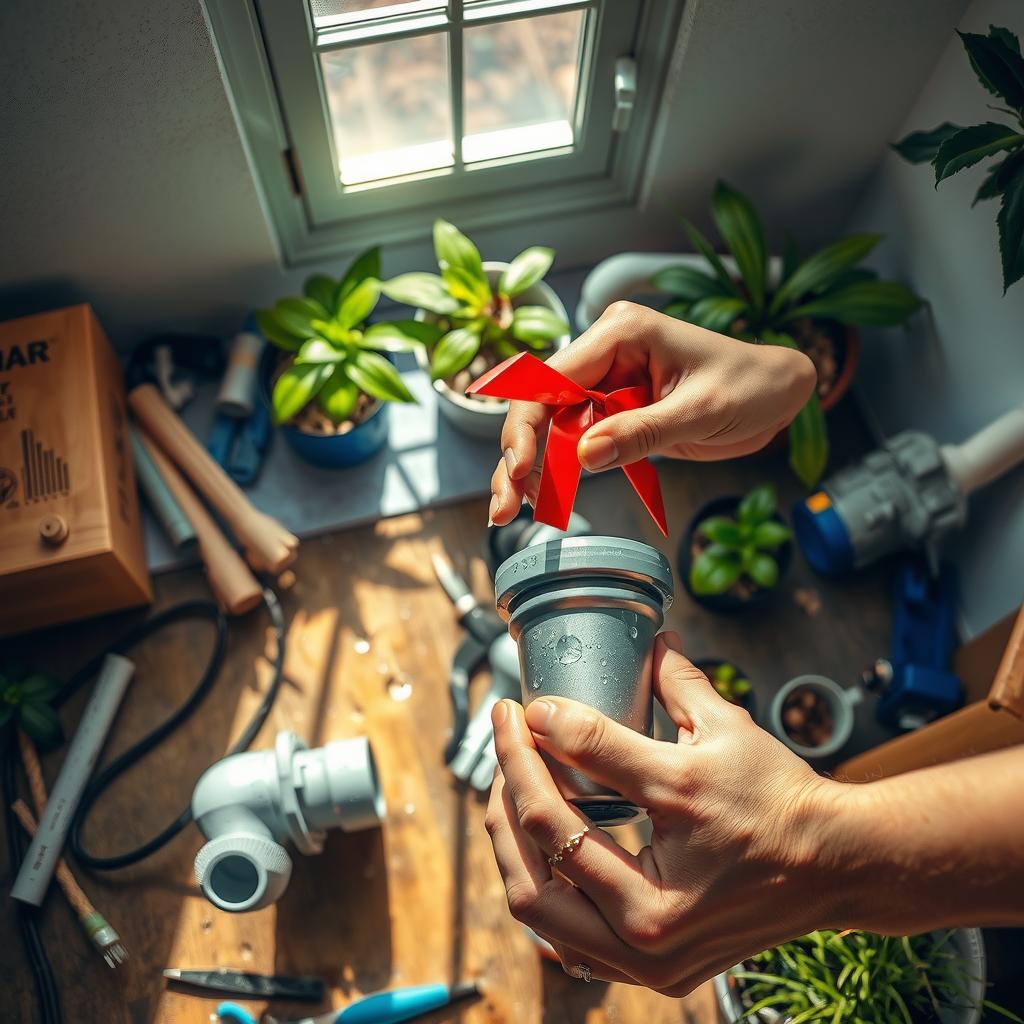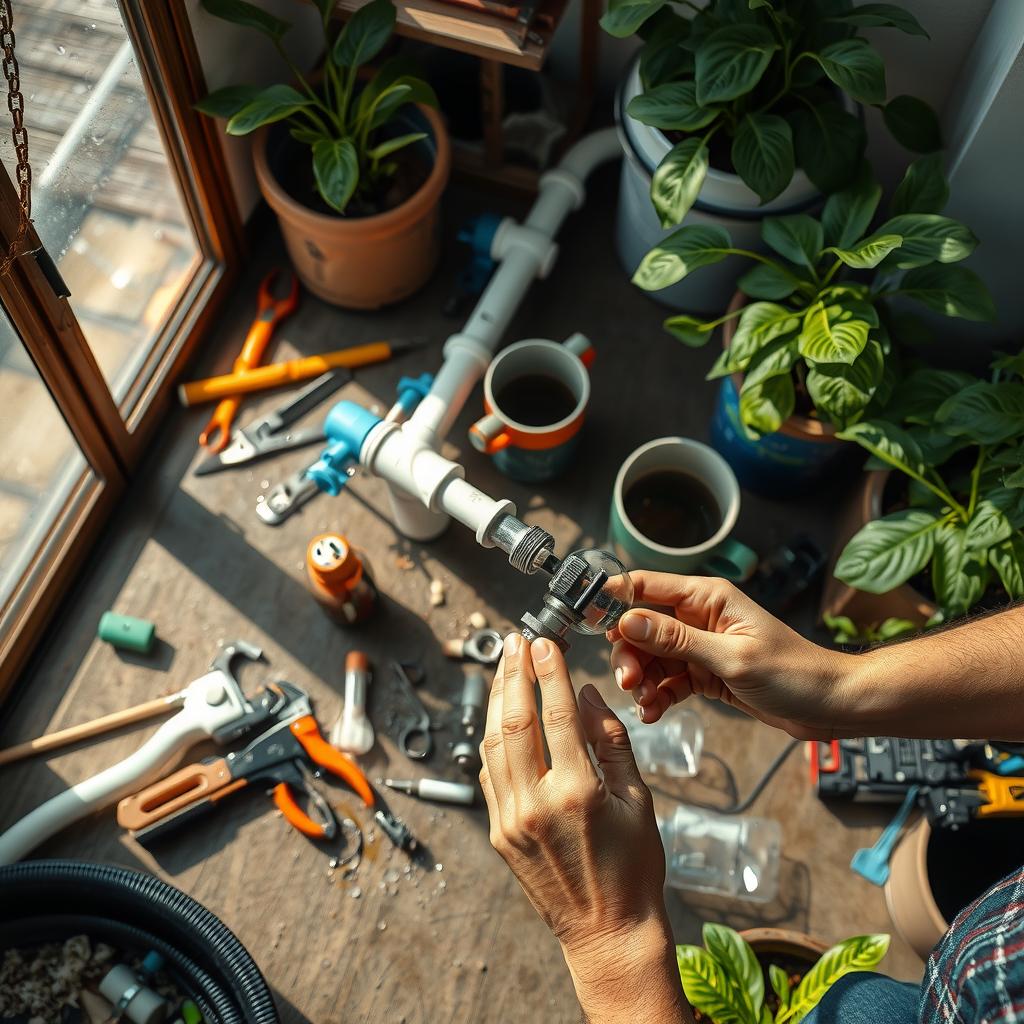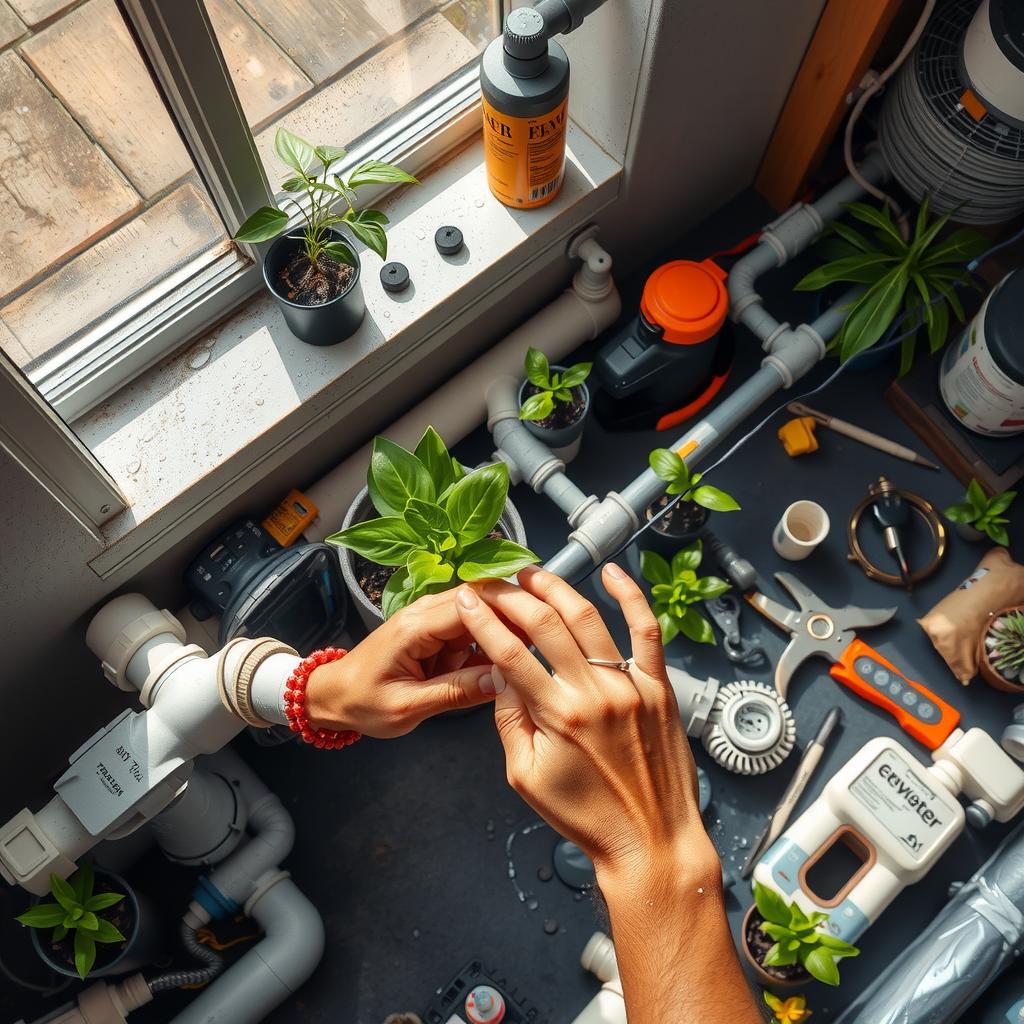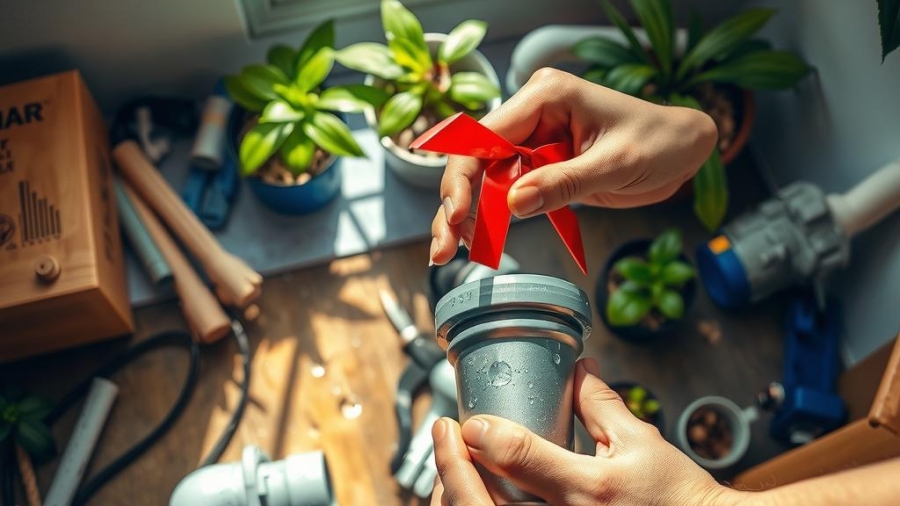As water scarcity becomes an increasingly pressing issue worldwide, homeowners are seeking innovative solutions to conserve this precious resource. Many people may not realize that a significant amount of water used in their homes could be recycled and reused, particularly the greywater generated from sinks, showers, and washing machines. This is where the Greywater system comes into play—a practical and eco-friendly practice that allows homeowners to reclaim this water for irrigation or toilet flushing. However, the thought of installing such a system might seem daunting at first glance.
In this comprehensive DIY guide, readers will discover how they can take charge of their own water recycling efforts with some straightforward installation tips. The objective is not only to ease the process but also to empower individuals interested in home improvement projects that promote sustainable living. By adopting a greywater system, households can significantly reduce their overall water consumption while contributing positively to environmental conservation.
The beauty of a greywater system lies in its simplicity; it offers an effective plumbing solution without requiring extensive renovations or professional assistance—ideal for those who enjoy tackling DIY projects on weekends. Not only does implementing these systems lead to lower utility bills, but it also cultivates responsible practices surrounding everyday resources.
Moreover, as more homeowners become aware of sustainable practices available today, integrating a greywater system into their lives aligns perfectly with broader eco-conscious trends aimed at reducing waste and preserving our planet’s natural resources. With climate change concerns escalating alongside growing urban populations, finding ways to recycle water efficiently becomes imperative.
This blog post aims to unravel the mystery behind setting up your very own greywater system through step-by-step guidance tailored for novice DIY enthusiasts as well as seasoned pros alike. Readers will learn about essential components needed for installation along with crucial considerations regarding local regulations and best practices ensuring compliance with safety standards.
By following along with this informative guide on greywater systems—even those without prior plumbing experience—can confidently embark on their journey towards creating a more sustainable home environment while fostering love for hands-on learning experiences! So why wait? Dive right into understanding how you can transform your household’s approach toward wastewater management today!

Key points:
-
Choosing the Right Components: Selecting suitable materials and components is crucial for an efficient Greywater system. Homeowners should consider durable piping, filters, and storage tanks that comply with local regulations to ensure optimal performance. Understanding different plumbing solutions tailored to a household’s specific needs can significantly enhance the effectiveness of the Greywater system.
-
Installation Process Overview: The installation process of a Greywater system can be straightforward if approached methodically. This DIY guide provides clear step-by-step instructions, making it accessible even for those with limited plumbing experience. By following these practical tips, readers will feel empowered to tackle this home improvement project confidently while reaping the benefits of water recycling.
-
Safety Measures and Compliance: Ensuring safety during installation is vital not only for compliance with local laws but also for peace of mind. The guide emphasizes important precautions that should be taken when setting up a Greywater system, such as proper drainage systems and regular maintenance checks. These steps are essential in fostering eco-friendly practices within households while promoting sustainable living efforts effectively.

Understanding Greywater Systems: The Environmental Impact
Exploring the Significance of Greywater Systems in Addressing Water Scarcity
The implementation of a greywater system is becoming increasingly vital in contemporary discussions surrounding water scarcity and sustainable living. By capturing wastewater from sources such as sinks, showers, and washing machines, greywater systems effectively recycle this resource for non-potable uses like irrigation and toilet flushing. This process not only conserves precious freshwater but also minimizes the burden on municipal sewage systems. For homeowners looking to adopt eco-friendly practices, understanding how to install a greywater system can serve as an essential DIY guide that aligns with home improvement goals. Installation tips often suggest simple plumbing solutions that can be integrated into existing household systems without extensive renovation.
Moreover, the environmental impact of utilizing a greywater system extends beyond mere water conservation; it fosters a culture of sustainability within communities. As individuals become more aware of their consumption patterns, they are encouraged to explore water recycling methods that lessen reliance on traditional resources. By using treated greywater responsibly, households contribute actively to environmental preservation while reducing their utility bills—a win-win situation for both ecology and economy.
Statistics reveal alarming rates of global water scarcity affecting millions worldwide; therefore, adopting greywater systems is not just an option but rather an imperative step toward responsible stewardship of natural resources. Communities leveraging these eco-friendly practices illustrate how innovative plumbing solutions can transform waste into valuable assets—thus promoting sustainable living ideals among residents.
In conclusion, investing time and effort into understanding the functionality and benefits associated with greywater systems empowers homeowners to make informed choices about their everyday habits while contributing positively towards larger ecological goals. Embracing such initiatives signifies progress toward addressing pressing challenges linked with dwindling freshwater availability—a crucial factor we must navigate for future generations’ well-being.

Installation Process: Step-by-Step Guide
Essential Steps for a Successful Greywater System Installation
Installing a greywater system can be an excellent way to contribute to sustainable living while enhancing home improvement efforts. This guide aims to provide readers with essential tips and a detailed walkthrough for the installation process, ensuring they feel confident in their DIY endeavors. The first step involves understanding local regulations regarding greywater usage, as many municipalities have specific guidelines on how these systems should be installed and maintained. It is crucial for homeowners to familiarize themselves with these legal requirements before proceeding, as non-compliance could lead to fines or forced removal of the system.
Once compliance issues are addressed, homeowners should assess their plumbing infrastructure to determine the best configuration for their greywater system. This may involve identifying which sources of water—such as sinks, showers, or laundry machines—will feed into the greywater collection tank. Proper planning is vital; it ensures that all necessary materials are gathered beforehand and minimizes interruptions during installation. Common components required include pipes, valves, filtration units, and storage tanks specifically designed for greywater recycling.
Next comes preparation of the site where the greywater system will be installed. This often requires digging trenches or preparing areas within gardens where recycled water can be dispersed safely through subsurface irrigation methods like drip lines or basins designed to absorb runoff effectively without causing harm to plants or soil quality. Homeowners must prioritize safety by wearing protective gear such as gloves and goggles when working with plumbing fixtures since there may be residual contaminants present in used water.
When moving forward with assembly instructions outlined in any DIY guide available online or from manufacturers’ manuals on installing a greywater system, meticulous attention must be paid at each stage—from connecting pipes securely using appropriate fittings to ensuring that filters are properly placed so that solids do not clog up irrigation pathways later down the line. Regular checks throughout this phase will help identify potential leaks early on.
As one approaches completion of their eco-friendly project utilizing sustainable practices through effective plumbing solutions like those offered by modern greywater systems, it’s important also not overlook regular maintenance routines post-installation—cleaning filters periodically based upon usage frequency being key here! For optimal performance over time—and thus better conservation outcomes—it would serve households well if they kept track of how much recycled water is utilized weekly alongside noting changes observed within surrounding gardens nourished by this newly implemented resourceful approach towards managing household waste responsibly without compromising comfort levels experienced indoors/outdoors alike!
Choosing the Right Materials for Effectiveness
Essential Insights into Material Selection and Drainage
Selecting appropriate materials is crucial for ensuring the effectiveness of any project, especially when implementing a Greywater system. The choice of materials not only affects the functionality but also plays a significant role in water recycling efforts that promote sustainable living. When embarking on this journey, individuals should consider durability, compatibility with existing plumbing solutions, and eco-friendliness of the materials chosen. For instance, using high-quality piping can prevent leaks and facilitate optimal drainage—an essential factor for a well-functioning Greywater system. Furthermore, proper drainage must be prioritized to avoid stagnant water that could lead to unpleasant odors or even health hazards.
In addition to material selection, understanding local regulations regarding greywater reuse is vital. This knowledge allows homeowners to make informed decisions while adhering to legal standards. A DIY guide focusing on installation tips can aid in selecting appropriate components that align with both aesthetic preferences and functional requirements. Materials like PVC pipes are often favored due to their resistance against corrosion and ease of installation; however, it’s important also to consider alternatives such as recycled plastic which further supports eco-friendly practices.
Home improvement projects involving Greywater systems provide unique opportunities for innovation in residential plumbing solutions while promoting environmental responsibility. For example, integrating permeable surfaces around landscaping areas not only enhances aesthetics but also ensures efficient water absorption—a key consideration when determining site layout for effective drainage.
Moreover, incorporating natural filtration techniques within these systems can enhance performance by optimizing how greywater is treated before being reused in irrigation or toilet flushing applications. Selecting the right filter media alongside durable conveyance materials will significantly impact overall efficiency.
Ultimately, thoughtful material selection combined with strategic planning will empower homeowners to create effective greywater management strategies that support sustainable living goals while enhancing property value through innovative home upgrades.
Ultimate DIY Guide to Installing Your Own Greywater System for Sustainable Living
In a world increasingly challenged by water scarcity, the implementation of effective water recycling strategies is essential for sustainable living. Homeowners are actively seeking solutions that allow them to conserve water while maintaining their everyday routines. One remarkable option that emerges is the Greywater system, which facilitates the reclamation and reuse of wastewater from sinks, showers, and laundry for irrigation and other non-potable uses. This DIY guide aims to provide essential installation tips that empower readers in setting up their own Greywater system at home.
To begin with, understanding the plumbing solutions that best fit individual household needs is crucial when planning to install a Greywater system. An effective installation process can be straightforward if approached methodically. The guide offers step-by-step instructions along with helpful diagrams, making it accessible even for those with limited experience in plumbing or home improvement projects. By following these guidelines, homeowners can confidently navigate through each phase of installing their own eco-friendly greywater solution.
Another critical consideration involves selecting appropriate materials and ensuring proper drainage systems are established—two key elements contributing significantly to the effectiveness of any Greywater system. Homeowners should prioritize using durable components designed specifically for greywater applications; this not only enhances performance but also ensures adherence to local regulations regarding safe water reuse practices. Moreover, emphasizing safety measures during installation will not only guarantee compliance but also instill peace of mind as users embark on this sustainability journey within their homes.
Ultimately, opting for a well-planned Greywater system represents a meaningful commitment toward reducing waste and fostering responsible stewardship over precious natural resources. As individuals embrace these eco-friendly practices through practical improvements in their households, they contribute positively not just to personal spaces but also towards wider environmental impacts—a true win-win scenario.
FAQs:
Q: What types of wastewater can I recycle using a Greywater system?
A: A Greywater system typically recycles wastewater from sinks, showers, washing machines (not including toilet waste), allowing homeowners to repurpose it safely for irrigation or other non-potable uses.
Q: How do I ensure my Greywater system complies with local regulations?
A: Before starting your project based on this DIY guide’s installation tips, it’s important to research local laws regarding greywater use in your area since regulations vary widely across regions.
Q: Can anyone install a Greywater system themselves?
A: Yes! With clear guidance provided in this DIY guide coupled with basic plumbing knowledge and tools available at most hardware stores , individuals can successfully install their own efficient grey-water systems, promoting sustainable living effortlessly.
